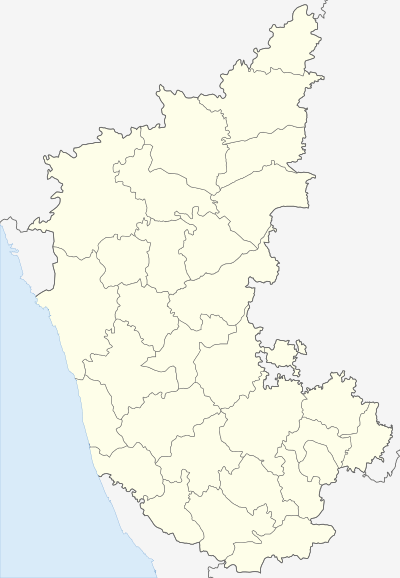Magadi
| Magadi ಮಾಗಡಿ | |
|---|---|
| town | |
|
Ranganatha Swamy temple | |
 Magadi Location in Karnataka, India | |
| Coordinates: 12°58′N 77°14′E / 12.97°N 77.23°ECoordinates: 12°58′N 77°14′E / 12.97°N 77.23°E | |
| Country |
|
| State | Karnataka |
| District | Ramanagara district |
| Elevation | 925 m (3,035 ft) |
| Population (2001) | |
| • Total | 25,000 |
| Languages | |
| • Official | Kannada |
| Time zone | IST (UTC+5:30) |
| PIN | 562120 |
Magadi is a town in Ramanagara district in the Indian state of Karnataka. Magadi was the capital of Kempe Gowda who founded Bangalore in the 16th century. In modern literature, the forests around Magadi were the setting of the true story "Old Munnusamy and the man-eater of Magadi" by the India born British hunter Kenneth Anderson. Since then, the wildlife around Magadi has been greatly reduced by poaching and habitat loss. Magadi is fast becoming a part of the growing Bangalore district whose border is just 25 km away.
Some noted historical sites in and around Magadi are the Savandurga, the Ranganatha Swamy Temple at Tirumale where a fair is held every April, the ruins of Magadi fort and the Gavi Gangadeshwara temple. [1]
History
In 1638, the Sultan of Bijapur won Bangalore from the stranglehold of Kempegowda II. From then on, Kempegowda made Magadi the capital of his territories. For nearly ninety years, Kempegowda and his successors ruled the Magadi region, including Magadi town, where Kempegowda II built a fort that housed the offices of his administration and the stone fortress of Savanadurga. According to B L Rice in Mysore Gazetteer, the Gowda rule ended when the Dalavayi Deva Raja, a general in the Mysore Army, captured the last of the rulers. In 1728, the Mysore army breached the weak fort of Magadi and captured Kempa Veerappa Gowda (also known as Kempegowda). The last scion of the Kempegowda clan spent his last days in the prisons of Srirangapatnam. The then-impregnable fortress of Savandurga, with the accumulated wealth of nearly 200 years finally fell into the hands of the Mysore kingdom.
Geography
Magadi is located at 12°58′N 77°14′E / 12.97°N 77.23°E.[2] It has an average elevation of 925 metres (3034 feet). Now Magadi has been added to Ramanagara district after its formation.
Demographics
As of 2001 India census,[3] Magadi had a population of 25,000. Males constitute 51% of the population and females 49%. Magadi has an average literacy rate of 67%, higher than the national average of 59.5%: male literacy is 73%, and female literacy is 60%.
References
| Wikimedia Commons has media related to Magadi. |
- ↑ "Magadi Pincode". citypincode.in. Retrieved 2014-05-19.
- ↑ Falling Rain Genomics, Inc - Magadi
- ↑ "Census of India 2001: Data from the 2001 Census, including cities, villages and towns (Provisional)". Census Commission of India. Archived from the original on 2004-06-16. Retrieved 2008-11-01.